If you’re starting to feel the need for a European vacation with sunny beaches, rich history, mind-blowing food, and genuinely wonderful people, then I’ve got just the place for you. You can find all of those things and more with a trip to Portugal.
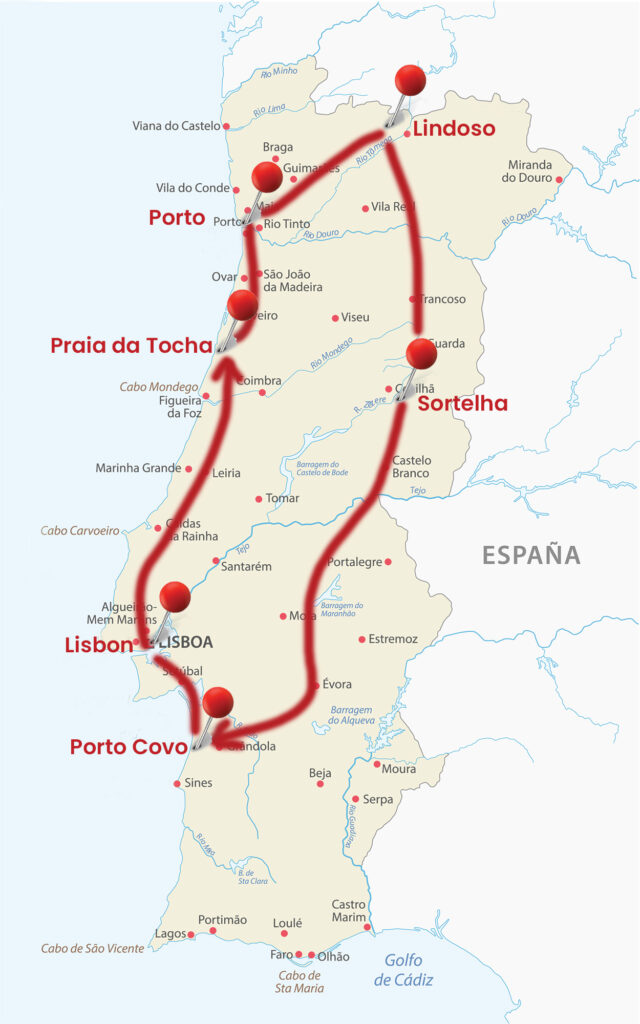
Until relatively recently, Portugal largely flew under the travel radar. Political unrest in decades past had left the country struggling to find its economic footing, but smart planning combined with a solid cultural foundation led to its current travel boom. Portugal is now one of Europe’s top destinations, with the climate, people, food, quality of life, and culture all contributing to its popularity.
Because it has a great public transportation system, travel throughout Portugal is easy, and, especially, for empty nesters. But, to see the nooks and crannies, renting a car and taking a road trip is the way to go.
For our Fall road trip, we decided to do a loop north instead of going south to the Algarve (the most popular area) because we wanted to see a variety of landscapes.
In just over two weeks, we covered a lot of territory without feeling like we were making a mad dash through the country. Each of our legs was 2-3 days–enough to see the area but not so much that we got antsy to move on, as you can see from my itinerary below. I take you along on our journey and include first-hand recommendations of things to do and places to eat that are easily doable for both young and older travelers. The information is far from exhaustive, but perhaps it will give you a decent start on planning your own Portugal road trip.
Leg 1: Praia da Tocha
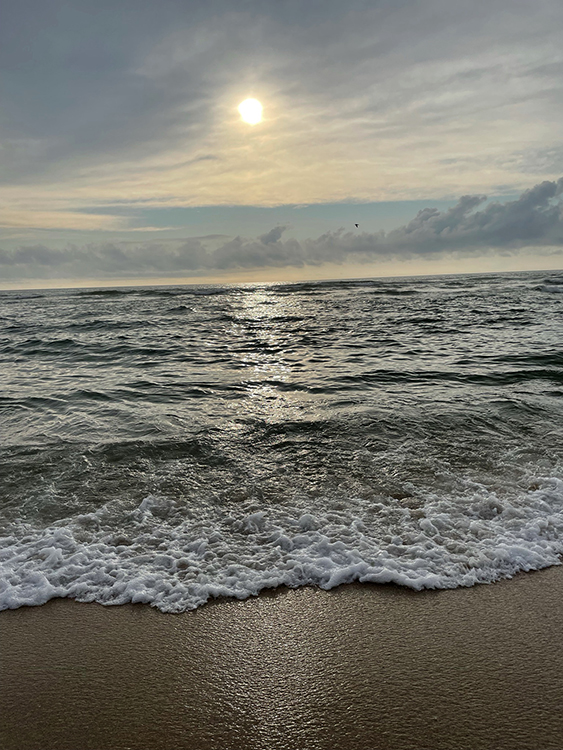
Praia da Tocha is a beautiful seaside town an easy two-hour drive north of Lisbon. A a small beach resort that is not touristy by most standards, Tocha offers peace, quiet, and relaxation and is a great base for exploring nearby.
Things to do (besides hang out on the beach)
Visit the Mercado: Praia da Tocha has a daily outdoor market during the season where you can find fruits & vegetables, meat, fish, clothing, sweets and various other items. It’s small but charming and worth spending an hour or two browsing.
Take a drive south to Nazaré. Known for its massive waves (and I mean truly massive waves), Nazaré is a great stop year round (although summer months are the busiest). We knew there wouldn’t be any wave activity when we visited in September, but it is a lovely little fishing village with plenty to do. You can check out the shore and marvel at the boats before heading to the fishing district for what seems like a step back in time. Or, take a ride on the Nazaré funicular to take in amazing views from nearby cliffs.
Drive north to Capela do Senhor da Pedra in Vila Nova de Gaia. This beautiful chapel sits on the edge of the beach and, when conditions are right, sits IN the sea, as the waters surround it completely. We visited late in the day to catch the sunset and then the lights that illuminate this beautiful building at night. Although this is considerably closer to Porto than Tocha, we visited on this leg because we knew that once we parked our car in Porto, we wouldn’t want to move it.
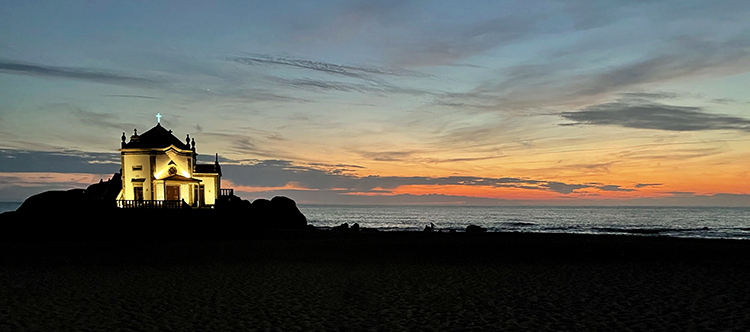
Dining recommendations
One of the absolute can’t miss options is Cova do Finfas. It is tucked away in a bottom of a building across from the Mercado, which complements its charm and relaxed atmosphere. For out-of-the-world seafood, this is the place to go. We ordered Peixe Misto com Gambas (fish with prawns) for two and a bottle of red Portuguese table wine, and both were incredible. This restaurant has mastered the art of seafood.
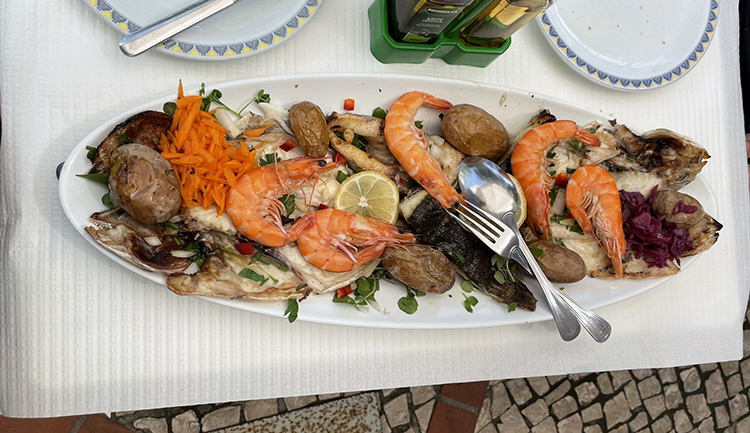
Restaurante Panorama is another great seafood option. Located across from the beach, it is centrally located and easy to find. Known best for its prawns, this is a great choice for a nice dining experience. One note: reservations are highly recommended to ensure you get a seat.
Leg 2: Porto
The next stop was Porto, an easy 1.5 hour drive north. Although Portugal’s second largest city, it feels small and is welcoming, easy to navigate, and well worth a couple of days (or more).
Things to do
Walk along the riverfront. The Duoro River runs through Porto and is the center of much activity. Whether you are on the north side or south side of the river, you can find a variety of shops, restaurants, historic buildings, and boat tours. Enjoy a stroll at night and take in the breathtaking views of the lights reflecting off the river from the buildings, the boats, and the Dom Luís I bridge.
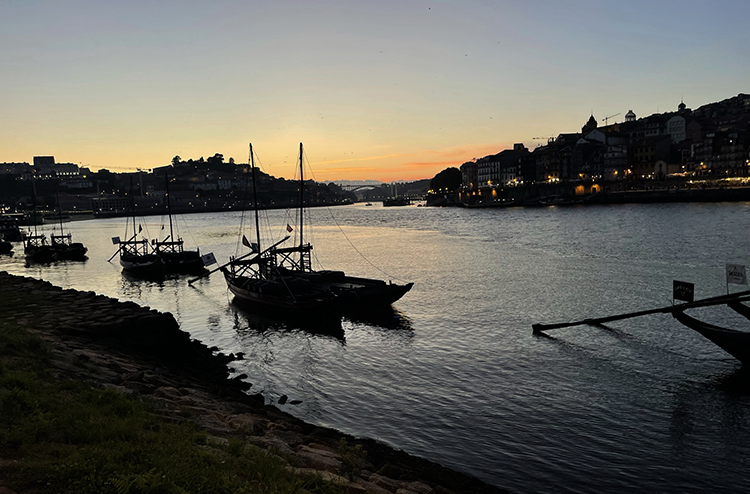
Shop at Livraria Lello. Renown for its supposed connection to the Harry Potter series (it’s not true), this bookstore is still truly magical. Take a photo on the iconic red staircase, pick up some beautifully bound classic lit, and spend a minute or two talking to the knowledgeable and friendly staff. Travel hint: purchase tickets online in advance and pay the extra €5 for the fast pass. The line to enter is long, but with the pass, you skip straight to the head of the line. Well worth a few extra bucks.
Stroll around Ribeira, one of the two historic districts. Named a UNESCO World Heritage site, Ribeira is known for its colorful buildings, cobblestone paving, and narrow streets. You will definitely need comfortable walking shoes to navigate the hills and a camera to capture the sites that will leave you wide-eyed all day. Travel hint: pack your good humor and patience because you’ll be part of a crowd of other people who are also taking it all in.
Listen to Fado at one of the local pubs or cafés. Characterized by its expressive and mournful sound, Portugal’s Fado music focuses on hardships or longing. Grab a drink and settle in for an evening of mellow entertainment.
Dining recommendations.
At times, it will feel like you can find a restaurant every ten feet, and you wouldn’t necessarily be wrong. The choices are amazing, so ask for recommendations or try one of these tried and true spots.
Mille Pinsa Romana. This Italian restaurant is located on the Avenida da Republica, so it is centrally-located and offers sidewalk dining as well as seating inside. Excellent service and even better food make this a great option when you’re ready for a break from seafood.
Barris do Duerno. Located on the southern riverwalk, this small restaurant serves big flavor. With just a few outdoor tables available, it is best to get there early if you want to enjoy the sunset and the views while enjoying dinner. Try the sea bass, which was, without exception, the best we’ve ever had.
Leg 3: Lindoso
We headed inland to the hill country for cooler air and a change of scenery. Located in Peneda-Gerés National Park, Lindoso is a small village on the Spanish border and is known for its ancient granaries and Lindoso castle. It’s a perfect home base for a few days of less-crowded sightseeing in the region. Travel hint: Lindoso is a tiny village with few amenities, so make sure you stop in Ponte de Barca (25 km) on your way to stock up on groceries and beverages. While there are restaurants and small markets available, they are not always convenient to reach.
Things to do
Lindoso castle. Classified as a National Monument, the castle is a mix of restored outer walls and well-preserved towers and apartments. Situated on the top of a hill, its excellent views made it well-suited as a border fortress during the War of Independence.
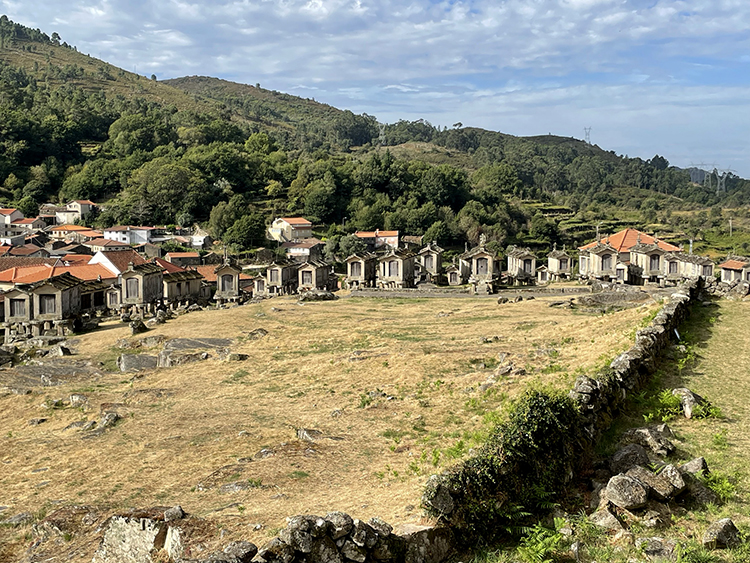
Lindoso Granaries were built to protect grain from destructive mice and spoilage. Approximately 50 stone structures are located just below the castle. Around the granaries are scattered stone homes with well-established grape vines creating a canopy of leaves and a sweet perfume. Keep a camera handy for some beautiful shots of rural Portugal.
Hike in Peneda-Gerés National Park. The only national park in Portugal is a great spot for a drive to see stunning landscaps or stop for a hike in the mountains. The park has several waterfalls if you want to take a cool dip, or you can visit one of the many villages along the way. It’s a great chance to get outside and enjoy the Portuguese countryside.
Dining recommendations
Continente in Ponte de Barca. Because restaurant options were limited, we stopped at a grocery store on the way in so we could cook. Make sure you take the time to grab a loaf of fresh bread and some cheese, and then head out to the park just behind the store for a picnic along the banks of the River Lima. Take a short walk toward city center and you’ll come to the Ponte da Barca bridge, a beautiful ancient Roman structure with a storied history.

Restaurant Espigueiro do Soajo. Located in Soajo, this roadside restaurant is more than meets the eye. Popular with local residents, the restaurant is crowded throughout the day. Your best bet is to make a reservation; however, we stopped in unplanned and they were very accommodating and seated us quickly. Excellent food and even better wine made the stop welcome after a morning of hiking.
Leg 4: Sortelha
Staying close to the Spanish border, we headed south for a stay inside the historic village of Sortelha. Our Airbnb was inside the castle walls, and, at night, we truly had the entire grounds to ourselves.
Things to do
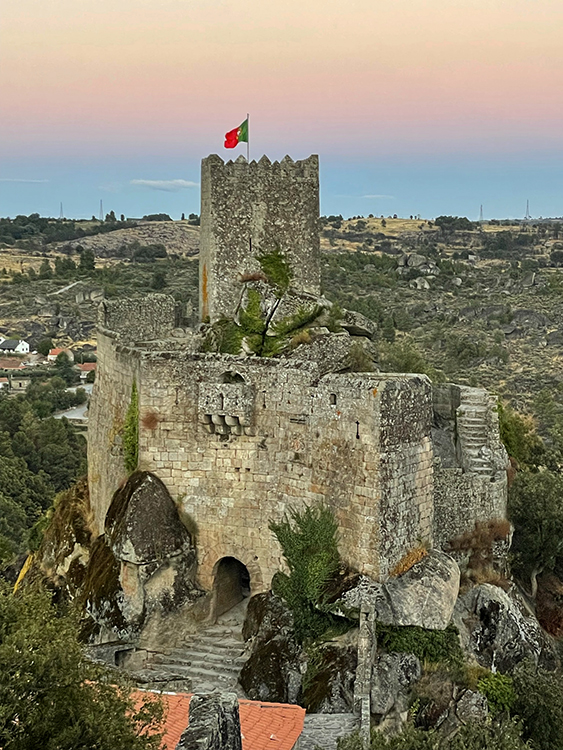
Wander the castle and grounds. Originally built to take advantage of the strategic location, the castle offers vast views of the surrounding landscapes. Climb the walls (at your own risk–it’s an ancient castle, afterall, without any modern additionas, like safety barriers), walk through cobblestone streets, and explore the castle grounds. You’ll feel like you’ve taken a step back in time.
Explore the countryside. With a variety of trails available nearby, spend some time hiking the beautiful areas nearby. You can visit waterfalls, breathe in fresh, mountain air, or even come across herders bringing their goats in from free-ranging. There are tons of adventures to choose from.
Dining Recommendations
There are cafes and restaurants within driving distance, but, because of their remote location, they might be inconvenient to visit. Again, I recommend bringing groceries and settling in for the trip.
Restaurante Dom Sancho is located inside the gates of the village and offers traditional food and a cozy atmosphere that perfectly matches the setting. The small size and limited hours can make it a challenge to get a seat, so call ahead for reservations.
Leg 5: Porto Covo
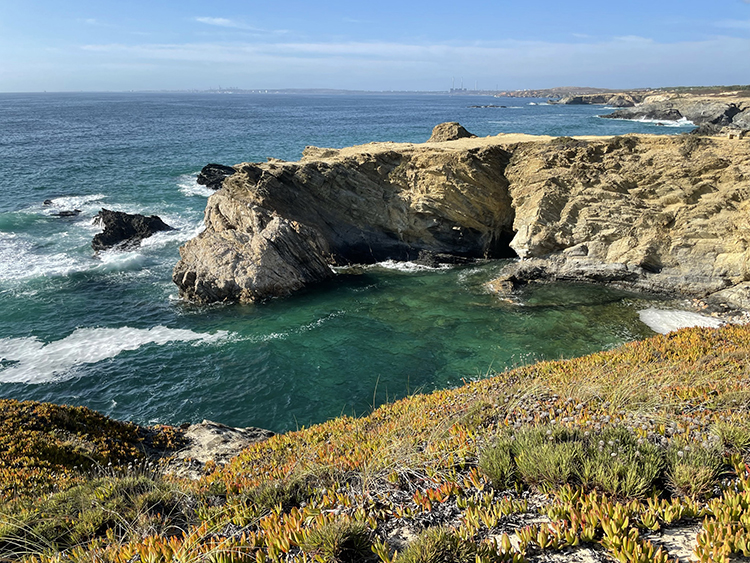
After leaving Sortelha, we headed back to the coast for a few more shore days. Porto Covo is definitely a beach town that caters to tourists, but its small size and lack of Algarve-size crowds made it feel less touristy and more authentic.
Things to do
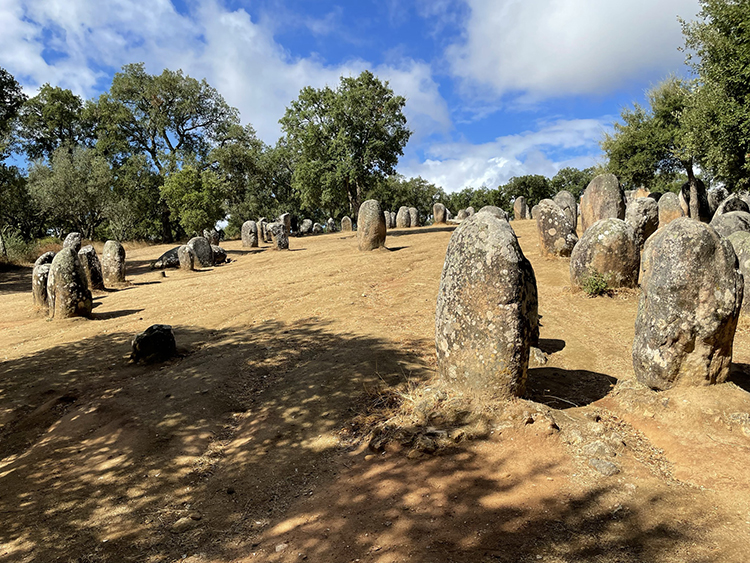
Visit Almendres Cromlech standing stones about two hours east (we stopped on the drive in). One of the most complete standing stone complexes in Europe, the ring is considered one of the best examples of a Neolithic circles in the region. The grounds are open to the public, so you can view the stones up close, and, because it can be difficult to visit (no public transportation), you likely will encounter few other visitors.
Spend a day at the beach. Porto Covo is known for its clean and environmentally-sound beaches. Praia Grande, its largest, has been awarded a Blue Flag designation, an honor bestowed on sites worldwide that meet stringent environmental, educational, safety and accessibility criteria.
Dining recommendations
Whether you grab a sidewalk table or a spot on the balcony overlooking the Bay of Porto Covo, you’ll enjoy your experience at Lamelas. Well known for fresh, regional food and friendly service, the restaurant is a favorite with tourists and residents alike who are looking for great food at reasonable prices.
For a more casual meal, check out Miramar. Fresh seafood, cold beer, and fabulous views combine to make this a great way to end a day at the beach.
Leg 6: Lisbon
The last stop on our road trip was Lisbon, an easy two-hour drive from Porto Covo. Technically, Lisbon wasn’t part of the road trip, though. Since Lisbon has a great public transportation system, and we really enjoy walking and exploring, we returned our rental car when we arrived and spent our final three days in the city mostly on foot.
Things to do–there are endless things to do in Lisbon, but here are a few first-hand recommendations.
Pena Palace in Sintra is, without a doubt, one of the most beautiful structures we’ve seen. Completed in 1854, it is a stunning example of Romantic architecture. The vibrant colors make it incredibly photogenic, and the artifacts make it interesting and educational. Travel hint: Pena Palace and the grounds are very crowded in peak season. Very crowded. Purchase your tickets online and try to be in the first group to enter in the morning to minimize unwanted photobombs in your shots, as we did. For the first 20 minutes, we often had castle rooms to ourselves.
Saint George Castle sits at the highest point of Lisbon. The original fortifications were built in the 11th century, and the castle saw expansion and growth through the 18th century. After the earthquake of 1755, more substantial renovations were made. Because it is open until 9:00 p.m., you can enjoy watching the sunset over Lisbon from the grounds.
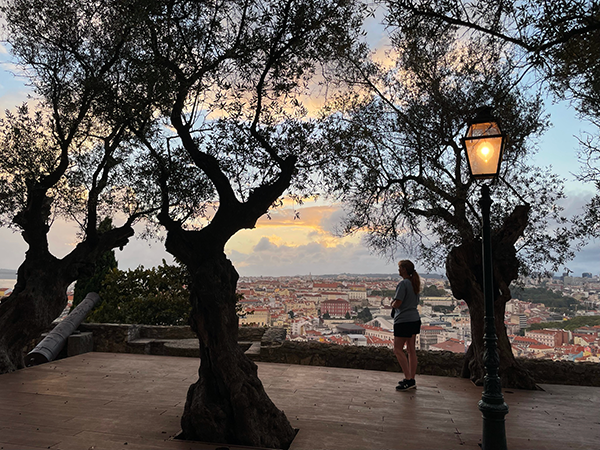
Take a walking tour through Lisbon. Known for its iconic trams, Lisbon is also a great city for sightseeing on foot. Narrow streets, interesting stops along the way, and beautiful architecture make each walk an adventure. You can check out the Pink Street for great photo ops, stroll along the seafront and watch the ships coming and going, or stand in awe at the size of Commerce square.
Dining recommendations
ZamBeZe in the historic district overlooks the River Tagus. When you call for reservations (recommended but not required), ask for a table on the terrace and watch the sunset while enjoying cuisine that is a mix of Portugal and Mozambique.
Just outside the walls of Saint George Castle, look for Claras em Castelo, a very small, cozy restaurant that blew us away with its friendly service and Portuguese home cooking. Make reservations for this very popular restaurant or, if you forget to do so as we did, get there when it opens and have lunch. Enjoy Portuguese wine as you wait for truly excellent food that is cooked fresh and served hot.
Add Portugal to your Travel List
All in all, our Portugal road trip gave us exactly what we were looking for: a variety of experiences, different views of the country, and immersion in the culture. If you’re planning a trip to Portugal, I urge you to make it a road trip and have your own amazing Portuguese adventure.

